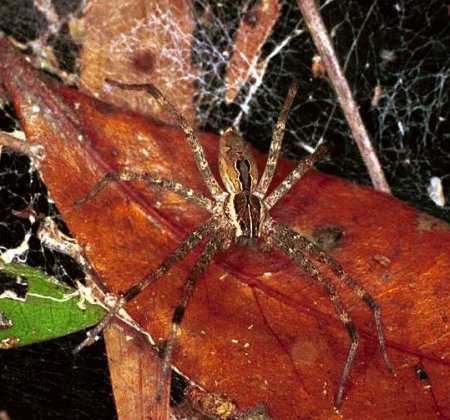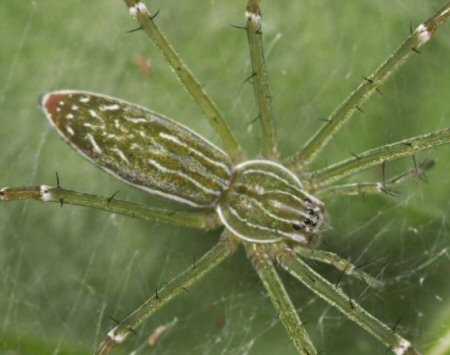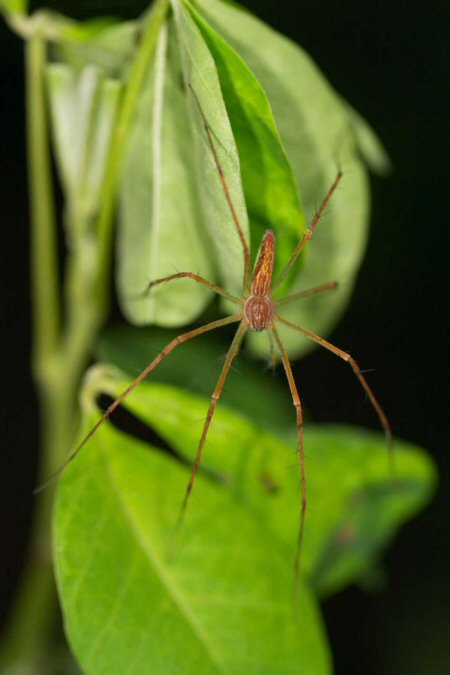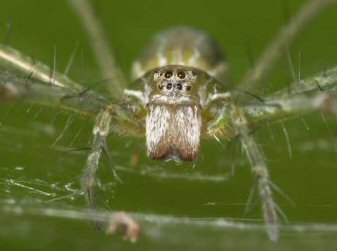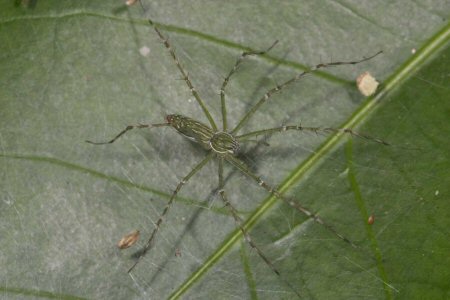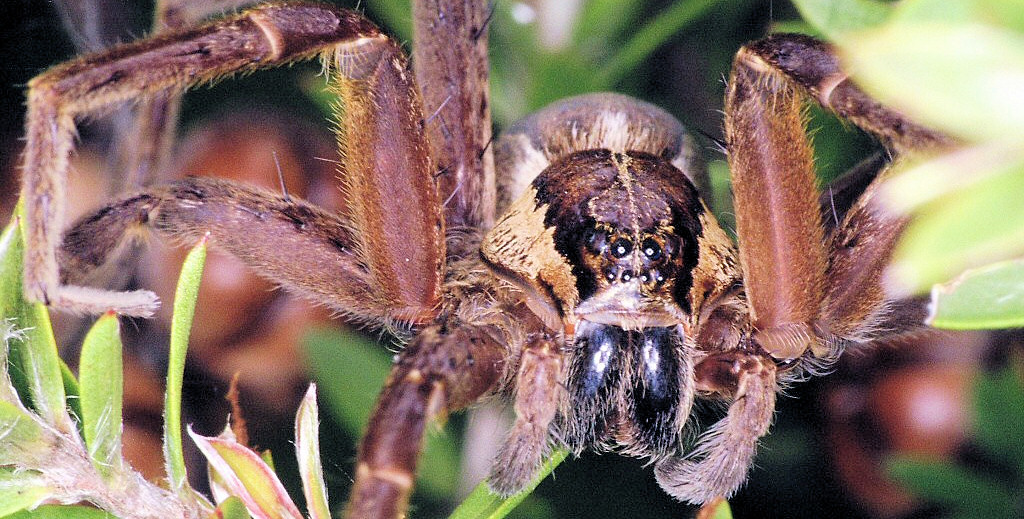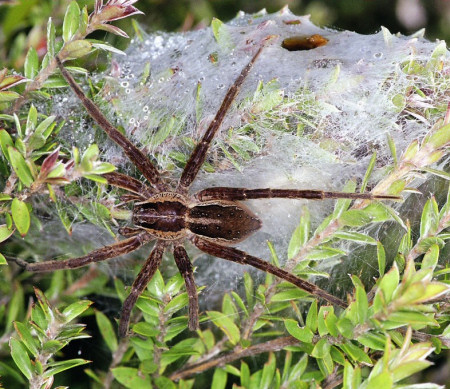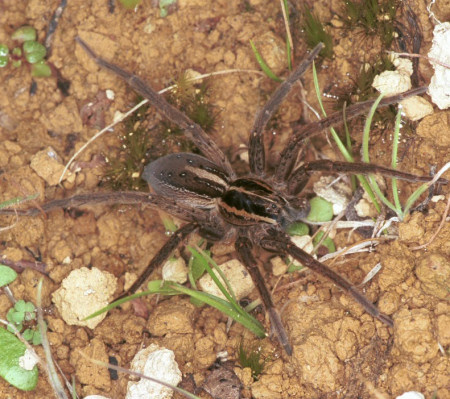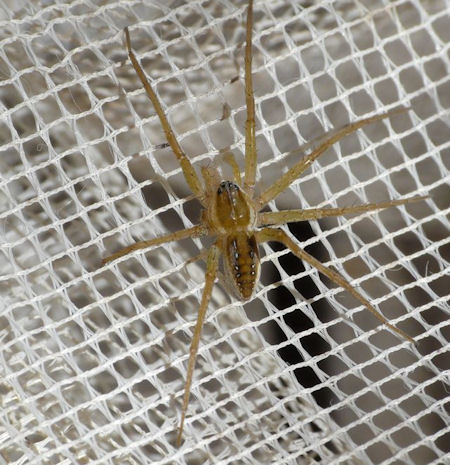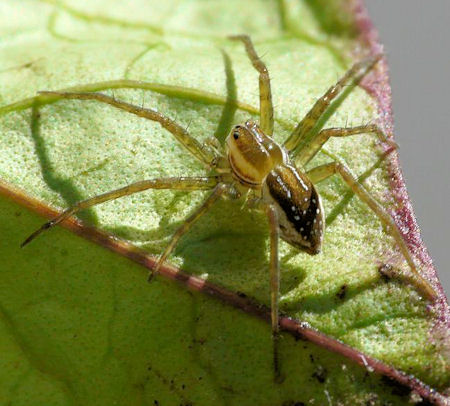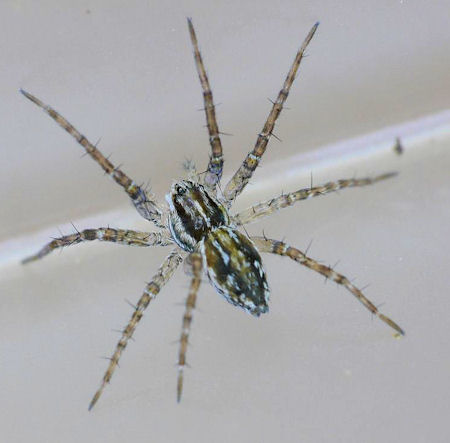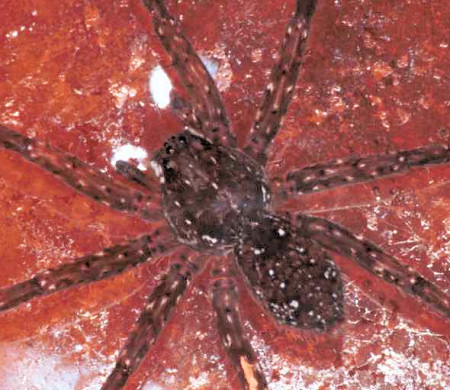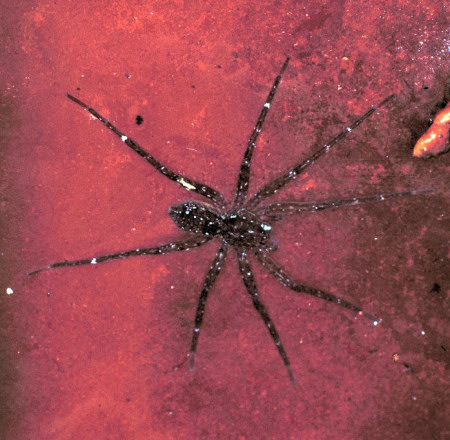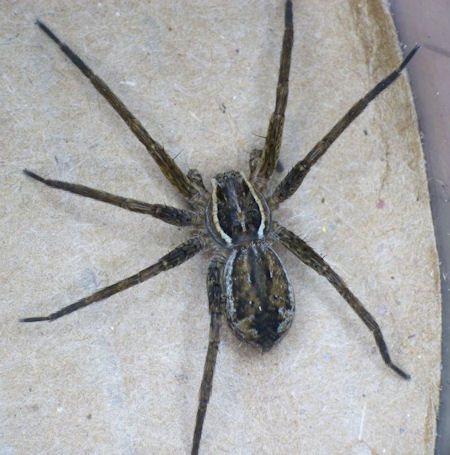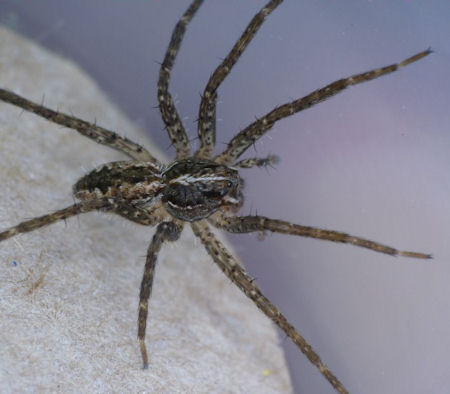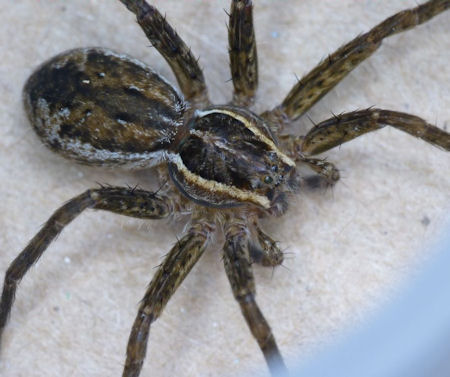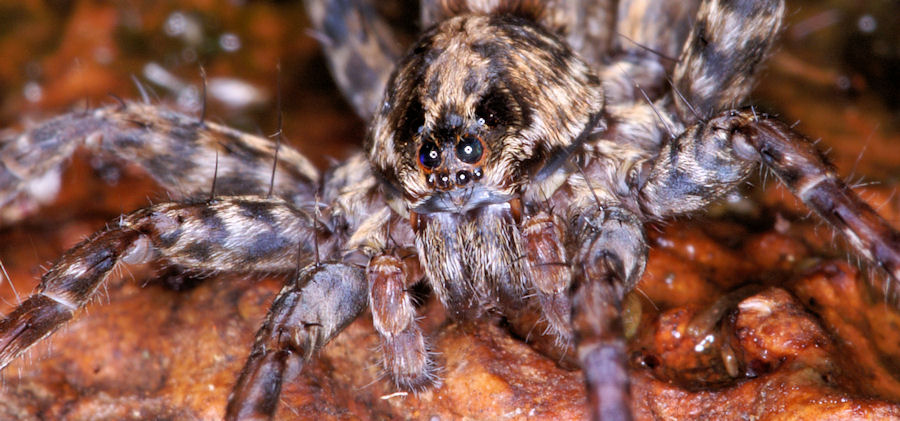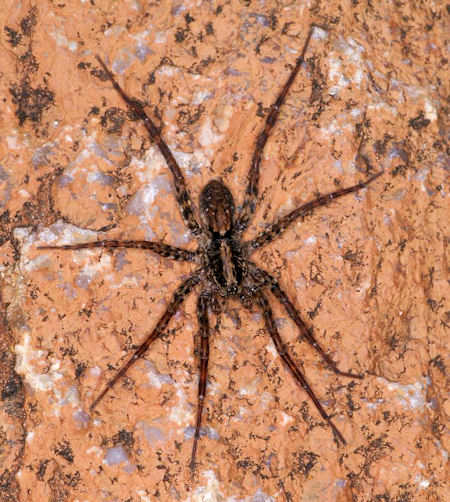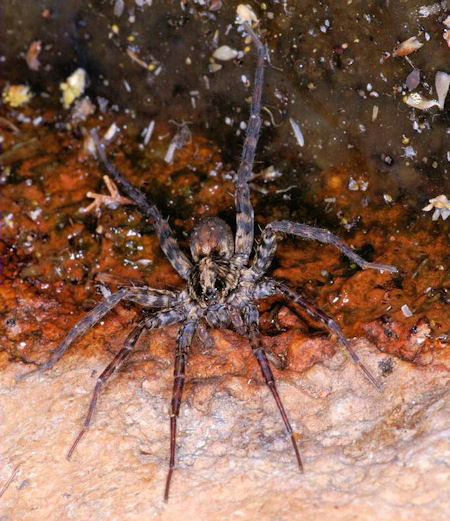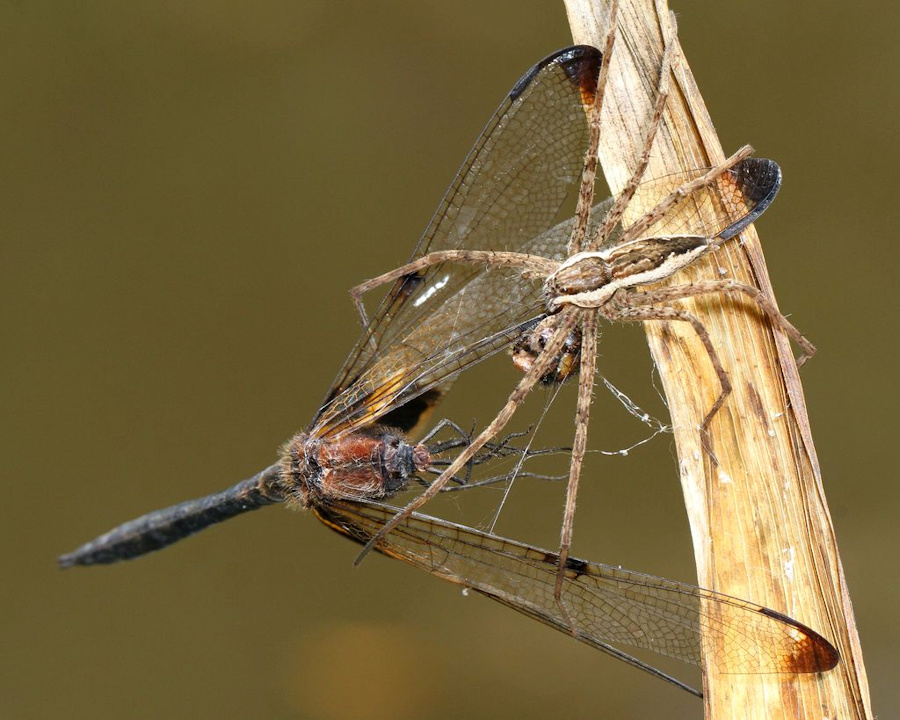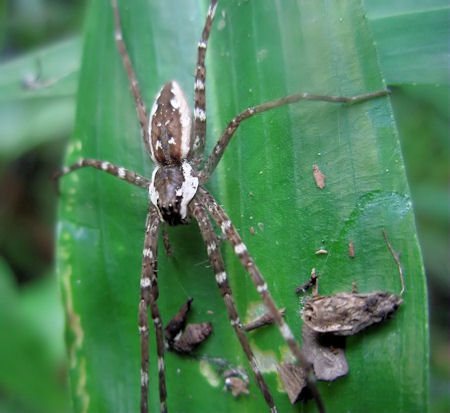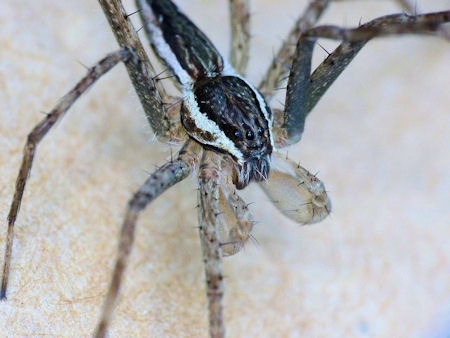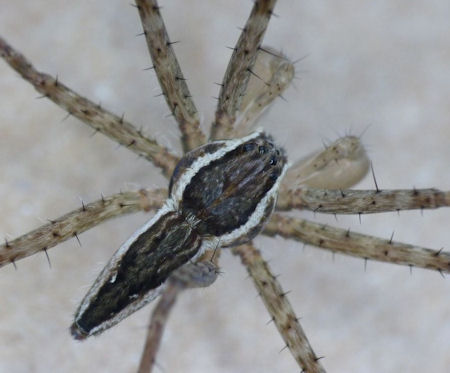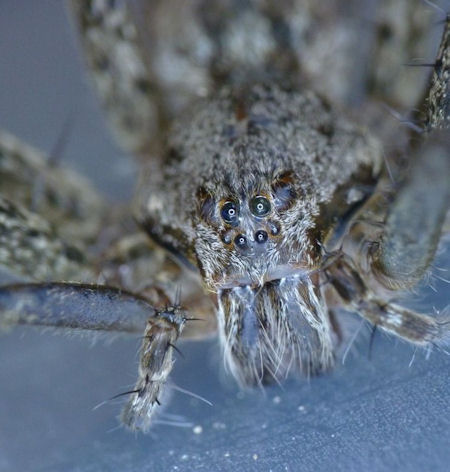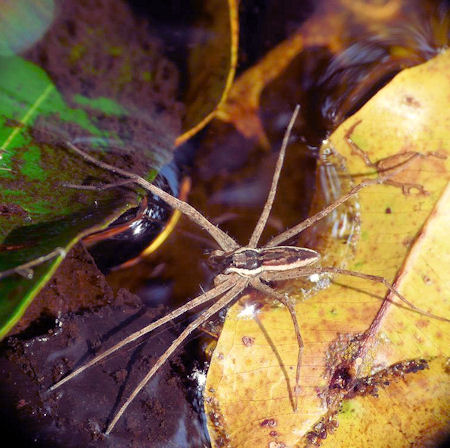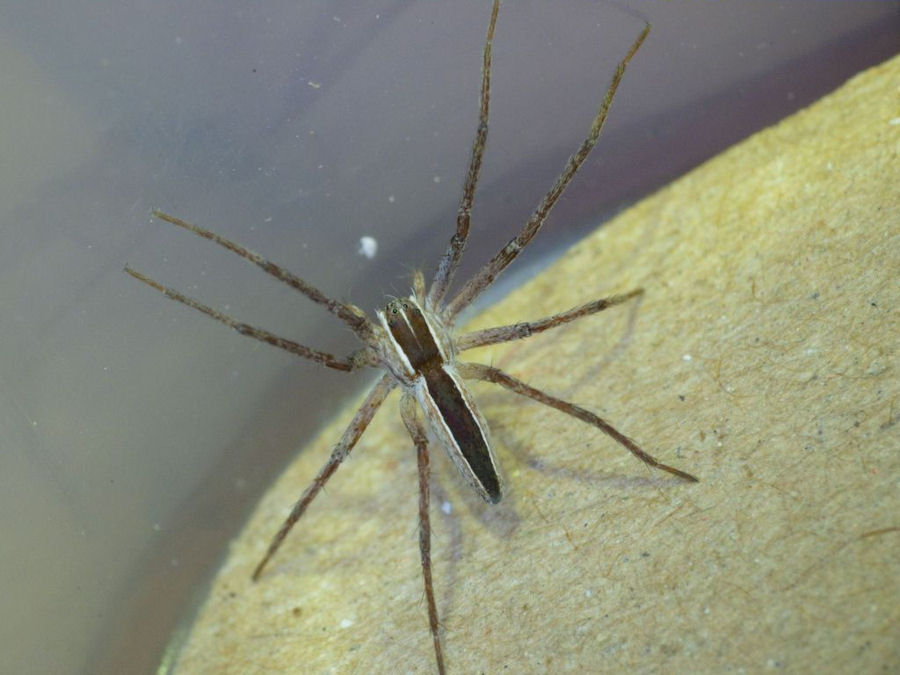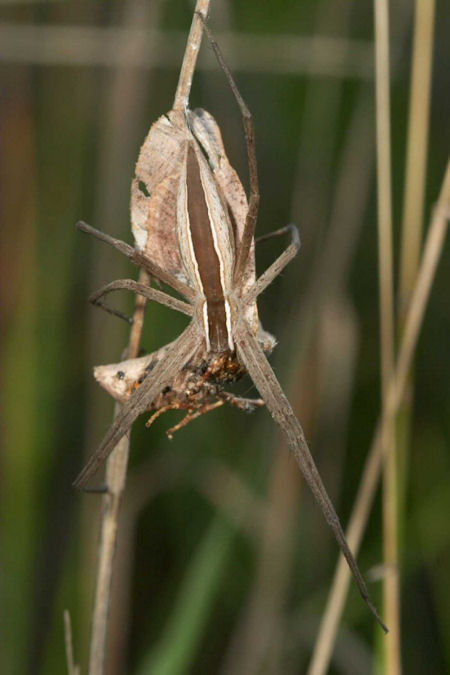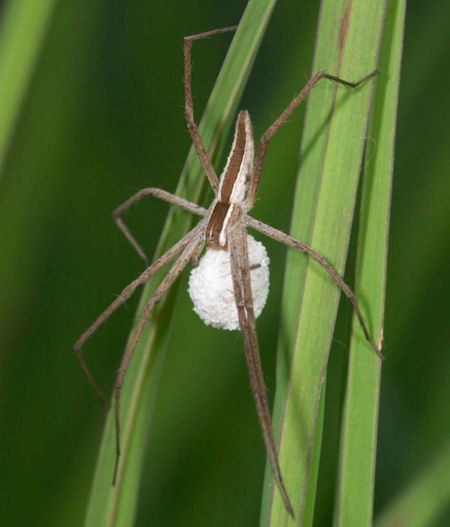This family contains ten genera and 25 descibed species in Australia.
The genus Dolomedes is the most commonly occuring genus and most species are placed in this genus. This family of nursery web spiders is closely related to the wolf spiders (Lycosidae).
They are large spiders measuring up to 30 mm.
These spiders live nearby water. In Britain they are also called swamp spiders or fishing spider. Females can reach a length of 25 mm while the males are around 12 mm.
Dolomedes spiders have the capability to walk on the water where they put one leg in the water to attract the fish with their leg. When the fish is too close with curiosity, the spider snaps it.
Like the water spider these spiders can also stay under water for over an hour surviving on air bubbles catched between hairs around the entrance of the booklung slits. They do not hunt under water but use it as a safe place to hide.
Nursery web spider carry their egg sacs with their chelicerae unlike the Lycosidae who attach the egg-sac at their spinners.
Just before the spiderlings leave their eggs the mother weaves a tent of silk around the egg sac.
The egg sac is then partially opened by the mother who then stands guard near the nursery tent. The youngsters stay in their tent until they change their skin for the first time.
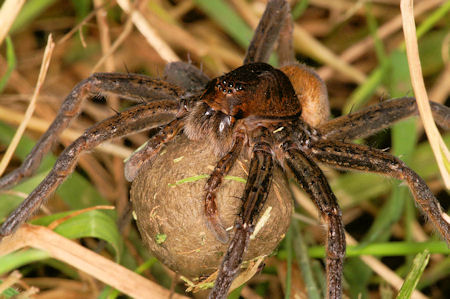
Dolomedes carrying her egg-sac
gripped with her chelicera (jaws) and palps
Note the surface tension that presses the water surface down and keeps de spider floating.

